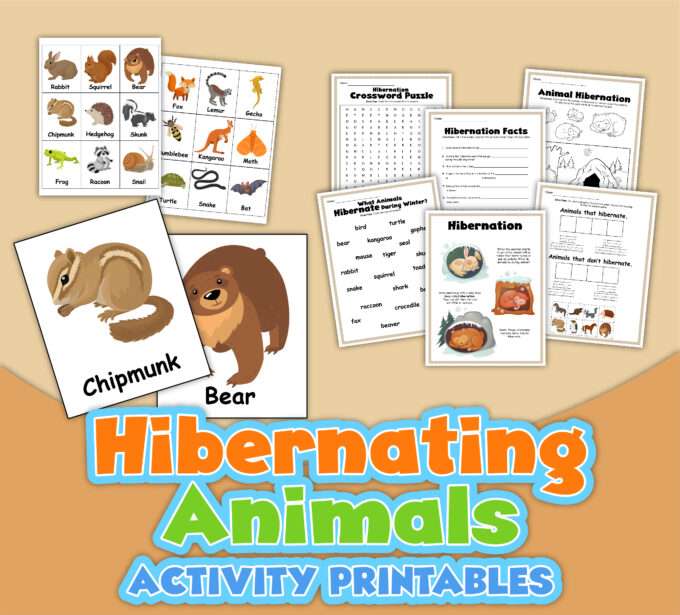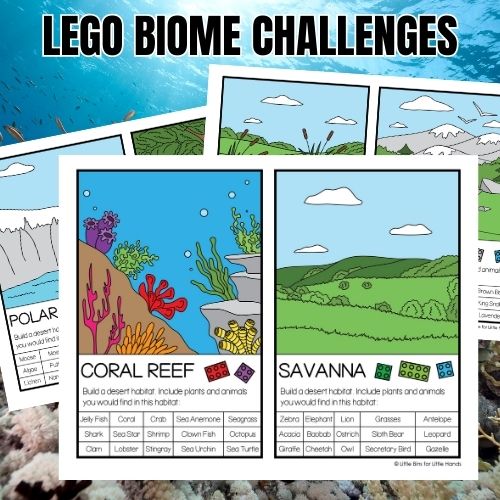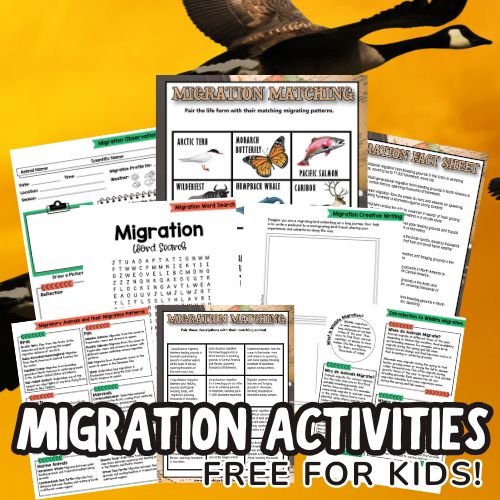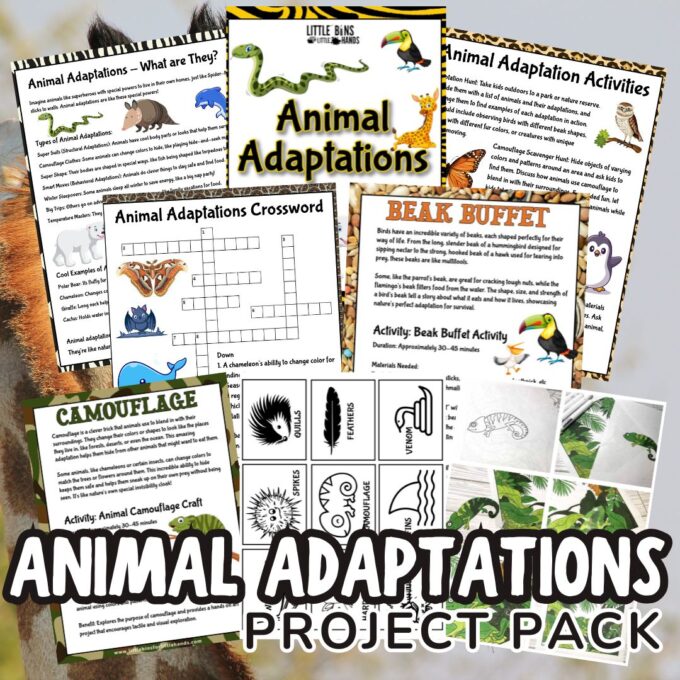Understanding the incredible ways animals adapt to their environments is fascinating and essential for appreciating the diversity of life on Earth. Whether you’re a teacher looking for classroom activities or a parent homeschooling your kids, exploring animal adaptations can be an exciting and educational journey through biology for kids of all ages. Add these simple ideas to your list of science experiments this year.

Below, we’ll delve into why learning about animal adaptations is essential, suitable age groups, and when to introduce these concepts, along with a range of engaging activities for hands-on learning.
Why Learn About Animal Adaptations?
Animal adaptations are a fascinating aspect of biology, the science of life. They encompass the remarkable ways different species have evolved specialized traits to survive and thrive in their environments. Adaptations come in various forms, from chameleons’ camouflage to birds’ mighty wings, including physical features, behaviors, and physiological mechanisms.
Studying animal adaptations allows biologists to delve into the intricate processes of natural selection and evolution. This includes understanding how organisms have adapted to specific ecological needs over time. Biologists gain insights into the diversity of life on Earth by exploring these adaptations. Learn more about scientists here.
Explore more biology activities here.
Understanding the natural world: Learning about animal adaptations helps children understand how different species survive and thrive in their environments.
Appreciating biodiversity: Exploring adaptations showcases the incredible diversity of life on Earth and fosters a sense of wonder and respect for nature.
Critical thinking skills: Studying animal adaptations encourages critical thinking as children analyze how specific traits help animals survive in their habitats.
Conservation awareness: Children develop empathy and a sense of responsibility toward protecting wildlife and their habitats by understanding how animals adapt to environmental challenges.

Age Groups and Learning Levels
Animal adaptation activities can be introduced to children as young as preschoolers and adapted to suit various age groups and learning levels. Here’s a general guideline:
Preschool to Kindergarten: Introduction to basic adaptations such as camouflage and hibernation through simple activities and stories.
Elementary School (Grades 1-5): Exploring a wider range of adaptations, including physical, behavioral, and physiological, with more complex activities and discussions.
Middle School (Grades 6-8): Delving deeper into the concept of adaptations, examining specific examples, and understanding the role of natural selection in shaping traits.
When to Learn About Animal Adaptations
Animal adaptations can be incorporated into various science curriculum units or introduced as standalone topics throughout the school year. However, it’s particularly effective to integrate these lessons during seasons or units that align with specific adaptations. For example:
- Fall: Focus on migration and hibernation as animals prepare for winter.
- Winter: Explore how animals stay warm and find food in cold climates.
- Spring: Study adaptations related to reproduction and nesting behaviors.
- Summer: Investigate how animals cope with heat and drought in arid environments.
Animal Adaptation Activities
Find the complete instructions and templates for the following activities in our Animal Adaptations Project Pack.
Teaching kids about animal adaptations can be both educational and fun! Here are some activity ideas that you can use to engage kids in learning about how animals adapt to their environments:
Animal Camouflage Craft
Provide kids with art supplies like construction paper, markers, and glue. Have them choose an animal that uses camouflage as an adaptation. Then, they can create a background scene and craft the animal using colors and patterns that help it blend into its environment.

Beak Buffet
Explain how different bird beak shapes are adapted for different types of food. Set up a “beak buffet” with various items like nuts, fruits, marshmallows, and straws. Assign each type of food to a specific beak shape (tweezers, tongs, chopsticks, etc.). Kids can use the appropriate “beak” tool to pick up each food item, simulating how birds feed based on their beak adaptations.

Adaptation Hunt
Take kids outdoors to a park or nature reserve. Provide them with a list of animals and their adaptations, and challenge them to find examples of each adaptation in action. This could include observing birds with different beak shapes, animals with varying fur colors, or creatures with unique ways of moving.
Take a look at this free Pattern Hunt game.
Camouflage Scavenger Hunt
Hide objects of varying colors and patterns around an area and ask kids to find them. Discuss how animals use camouflage to blend in with their surroundings. For added fun, let kids take turns being the “camouflaged” animals while others try to find them.
Adaptation Sorting Game
Prepare a collection of pictures or toy animals representing different adaptations (e.g., wings for flying, webbed feet for swimming, etc.). Have kids sort these adaptations into categories based on how they help animals survive (e.g., finding food, escaping predators, etc.).

Extreme Environment Diorama
Provide materials for kids to create dioramas of extreme environments like deserts, rainforests, or polar regions. Have them research the animals that inhabit these environments and include adaptations that help those animals thrive.
Build an Animal
Give kids a variety of craft materials like pipe cleaners, foam, paper, and googly eyes. Ask them to design and create their own imaginary animal, incorporating specific adaptations based on the environment they think their animal lives in.
Types of Animal Adaptations
Below, you will find 20 common types of animal adaptations used for survival!
Project Idea: Pick an animal, research its unique adaptations for survival, and prepare a presentation. Add images of some of the specific adaptations necessary for that animal. Or pick two similar animals and create a Venn diagram showing their differences and similarities. Free animal research sheets.
More Animal Activities to Explore
- Hibernating Animals
- Animal Migration
- Biomes Lapbook
- LEGO Biome Challenges
- Continents and Animals
- Animal Habitat Color By Number
- Australian Animal Activities






Printable Animal Adaptations Activities Pack
Suitable for elementary-age students at home or in the classroom!
Discover the wonders of the animal kingdom with our engaging Animal Adaptations Activity Pack! Packed with hands-on activities like the Beak Buffet and Camouflage Collage, your students will dive into how animals adapt to their environments.
From fun crosswords and word searches to informative sheets and interactive fill-in-the-blanks, this pack is designed to make learning about animal adaptations fun and educational. Bring the excitement of the natural world into your classroom today!
Explore the fascinating world of animal adaptations with our comprehensive Activity Pack, featuring:
- Beak Buffet: Discover how different beak shapes are adapted for specific diets.
- Camouflage Collage: Unveil the art of blending in with surroundings through a hands-on collage activity.
- Challenging Crosswords and Word Searches: Test knowledge while having fun with interactive puzzles.
- Informative Sheets: Dive deep into the science behind various animal adaptations with our informational resources.
- Interactive Fill-in-the-Blanks: Engage students with interactive worksheets that reinforce key concepts.
- And much more! Our pack ensures an enriching learning experience for all with a variety of activities to choose from.








